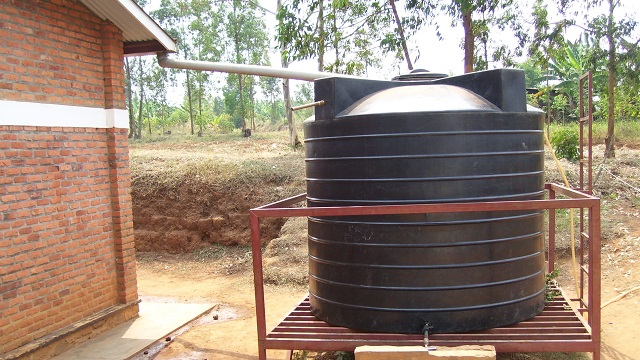
Kampala, Uganda | THE INDEPENDENT | Grace Nakimera’s rain water tank started discharging a mixture of dirt and strange living organisms six months after installation in 2017 in Kifumbira village in Kamwkoya, a Kampala suburb.
Nakimera says the problem gets worse whenever water levels in the tank reduces with decline in the amount of rainfall. Since tenants reported the contamination, the tank is yet to be cleaned or disinfected using water treatment chemicals.
Nakimera’s 10,000-liter capacity tank harvests rainwater from the roof for her family and tenants for domestic use. The wire mess on its top has failed to prevent dirt from the roof gathering into it.
But National Water and Sewerage Corporation says water tank contamination affects both rainwater harvesting tanks and the home water storage tanks connected to the water grid in many places in Kampala.
Engineer Andrew Muhwezi, the senior water production manager in Kampala service area says such contamination can be prevented through frequent cleaning and disinfection of the home storage tanks after every six months.
Eng. Muhwezi says the chlorine used by National Water and Sewerage Corporation to treat the water depreciates with time as the water mixes with impurities along the transport network and the customer’s home storage system.
The other measure recommended for safe storage of water is the installation of impurities drain tap also known as drain valve at the base of the home water storage tanks. Unfortunately, Eng. Muhwezi says many property owners avoid the valve citing high cost of plumbing.
He says without installing the valve, cleaning the tank becomes very difficult in the recommended way.
Many water tanks in Kampala are installed overhead the roof or midair above the ground. Others are on ground with their bases firmly cemented with lots of concrete materials. It is the latter that are prone to contamination as lizards and wild cats roam the roof depositing all sorts of dirt on the roof which end up into our water tanks during rainfall seasons under limited sun-heat.
Engineer Muhwezi says the list of Nakimera’s water tank bad installation is not yet complete without the mention of the absence of the first flush diverter which she can use to prevent the first few minutes of rains from transporting dirt from the roof tops into her home water tank.
The National Water and Sewerage Corporation recommends that home owners use powdered chlorine from the market to disinfect their tanks after every six months of water storage to significantly cut down the amount of contamination.
*****
URN
 The Independent Uganda: You get the Truth we Pay the Price
The Independent Uganda: You get the Truth we Pay the Price



